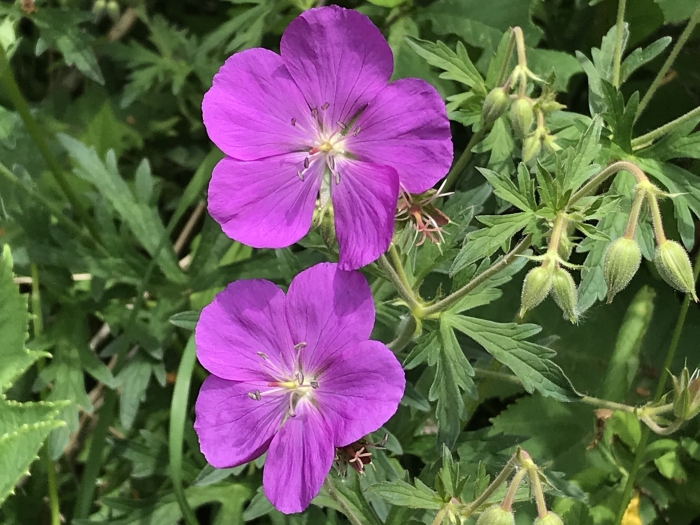Oregon Cranesbill
(Geranium oreganum)
Oregon Cranesbill (Geranium oreganum)
/
/

Aaron Liston
CC BY 4.0
Image By:
Aaron Liston
Recorded By:
Copyright:
CC BY 4.0
Copyright Notice:
Photo by: Aaron Liston | License Type: CC BY 4.0 | License URL: http://creativecommons.org/licenses/by/4.0/ | Rights Holder: Aaron Liston | Publisher: iNaturalist | Date Created: 2018-05-15T18:50Z |

























Estimated Native Range
Summary
Geranium oreganum, commonly known as Oregon cranesbill or Oregon geranium, is a perennial herb that is native to the Pacific Northwest of North America, including regions from California to Alberta. It thrives in moist mountain forests, meadows, and streambanks, where it contributes to the biodiversity of the area. This species typically reaches heights of 16 to 31 inches and features large palmate leaves that can span up to 6 inches wide, divided into several deeply cut lobes. From late spring to early summer, it produces showy lavender to purple flowers with five petals and pointed sepals, followed by a distinctive beak-like fruit that is a characteristic of the geranium family.
Oregon cranesbill is valued for its attractive foliage and flowers, which make it a popular choice for woodland gardens, native plant gardens, and informal borders. It is relatively low maintenance, requiring minimal care once established. This plant prefers partial shade to full sun conditions, moist well-drained soils, and regular watering, particularly in drier climates. It is not known for having serious disease or pest problems, but overwatering can lead to root rot. Oregon cranesbill can be propagated by seed or division, and it may self-seed under optimal conditions. When grown outside its native range, care should be taken to prevent it from becoming invasive.CC BY-SA 4.0
Oregon cranesbill is valued for its attractive foliage and flowers, which make it a popular choice for woodland gardens, native plant gardens, and informal borders. It is relatively low maintenance, requiring minimal care once established. This plant prefers partial shade to full sun conditions, moist well-drained soils, and regular watering, particularly in drier climates. It is not known for having serious disease or pest problems, but overwatering can lead to root rot. Oregon cranesbill can be propagated by seed or division, and it may self-seed under optimal conditions. When grown outside its native range, care should be taken to prevent it from becoming invasive.CC BY-SA 4.0
Plant Description
- Plant Type: Herb
- Height: 1-2 feet
- Width: 1-1.5 feet
- Growth Rate: Moderate, Rapid
- Flower Color: Pink, Purple
- Flowering Season: Spring, Summer
- Leaf Retention: Deciduous
Growth Requirements
- Sun: Full Sun, Part Shade
- Water: Medium, High
- Drainage: Medium, Slow
Common Uses
Border Plant, Butterfly Garden, Groundcover, Low Maintenance
Natural Habitat
Moist mountain forests, meadows, and streambanks
Other Names
Common Names: Oregon Crane’s-Bill, Wild Geranium, Western Geranium
Scientific Names: , Geranium oreganum, Geranium albiflorum var. incisum, Geranium albiflorum var. incisum, Geranium canum, Geranium hookerianum var. incisum, Geranium incisum, Geranium incisum, Geranium incisum, Geranium viscosissimum var. incisum,
GBIF Accepted Name: